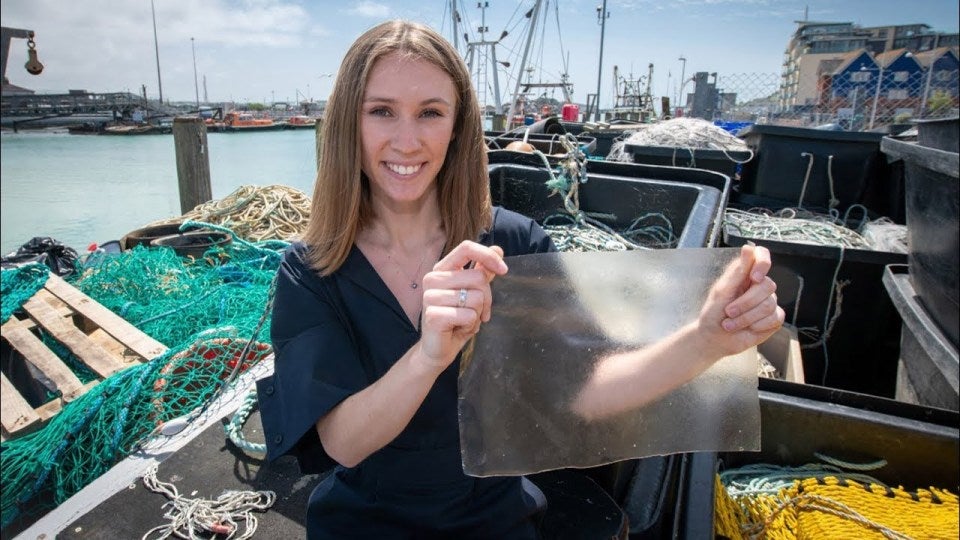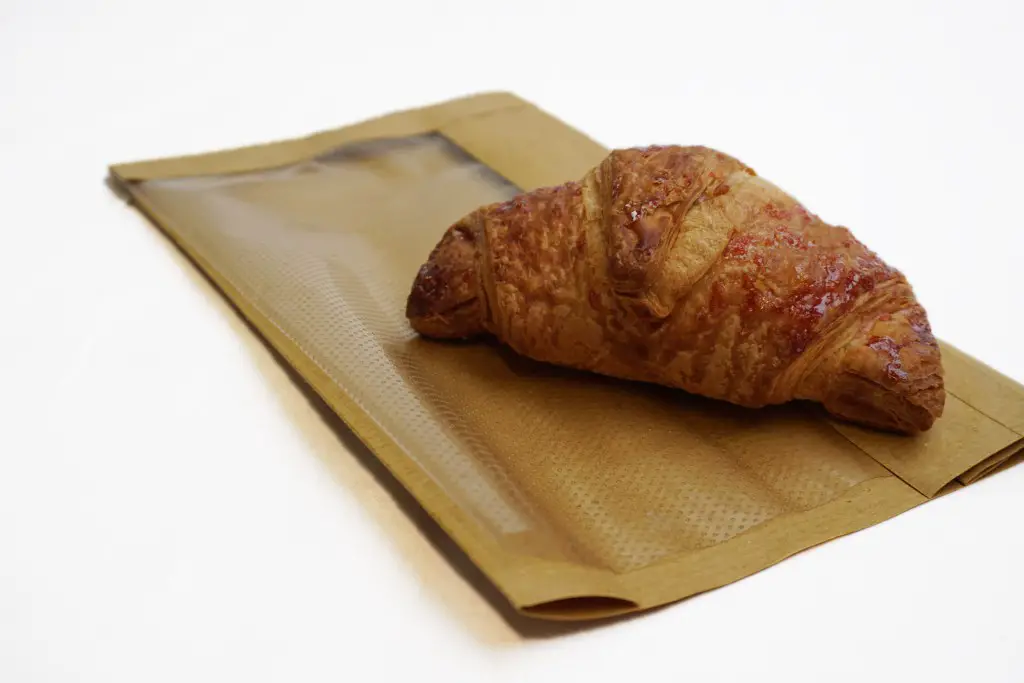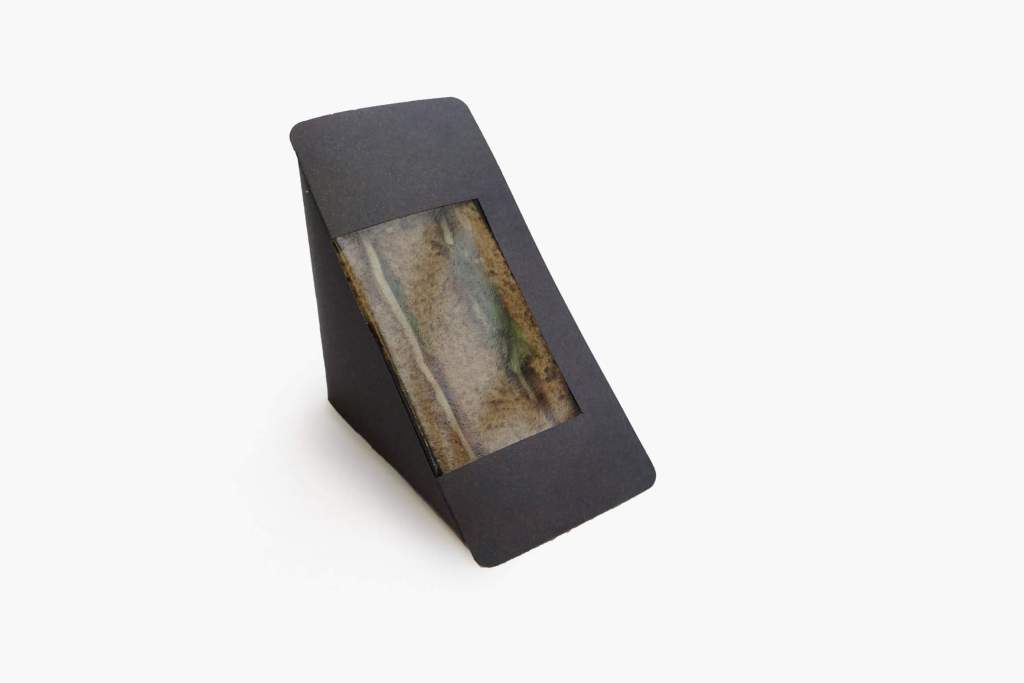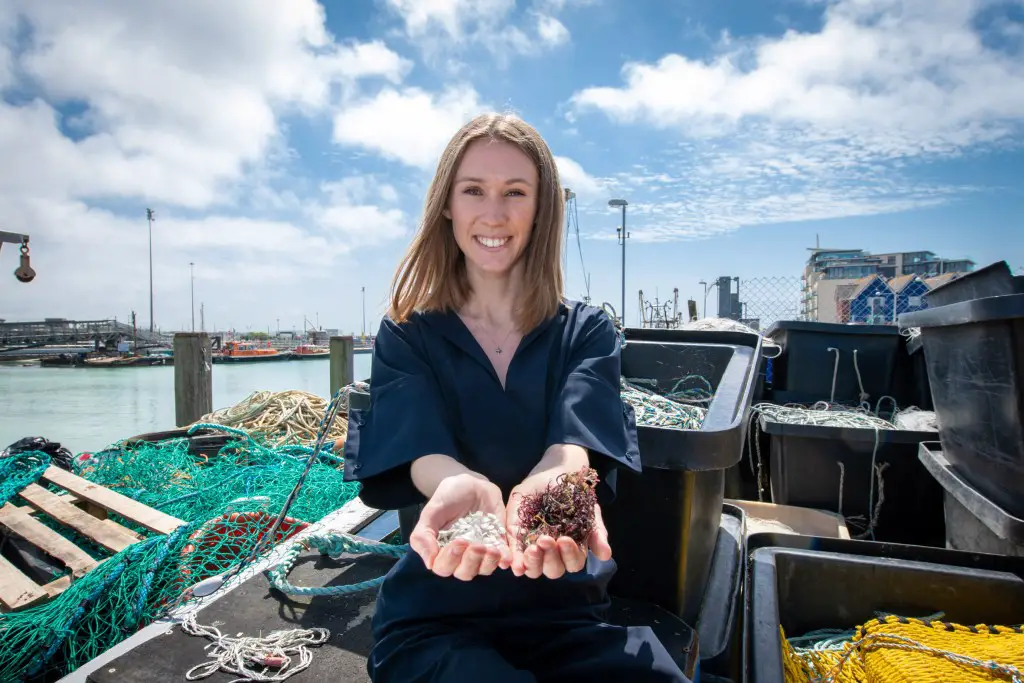From: https://lightonconspiracies.com/this-compostable-bioplastic-bag-made-from-fish-waste-won-the-james-dyson-award/
This Compostable Bioplastic Bag Made From Fish Waste Won The James Dyson Award
 By Mayukh Saha
By Mayukh Saha
A graduate from the University of Sussex has designed a material that turns fish waste into a useful packaging product that is also entirely compostable.
Named MarinaTex, the substance is a bioplastic that uses fish waste to make unique sheet material that is both flexible and translucent. The invention has helped the designer Nancy Hughes pick up this year’s James Dyson Award.

It is ideal for the packaging industry and has the potential to replace all of the plastic in everyday use. The material is made from a combination of red algae that is readily available locally, and fish waste that is otherwise incinerated or used as a landfill. It is an ideal alternative material for single-use plastic including containers for perishable foods and grocery bags. It doesn’t require specialized disposable systems, and can decompose in domestic composts or waste bins within 4-6 weeks.
The fish processing industry produces over 500,000 tons of waste in the UK alone as per data released by the UK sea fish industry authority. Her unique invention addresses the predicament of waste disposal and unearths a compostable substitute for the scourge of plastic.

The James Dyson Award recognizes and supports the new generation of design engineers from all over the world. She won the top prize that carries £2,000 ($2,500) for the UK edition and entry to the international edition that carries a top award of £30,000 ($37,500).
The development of MarinaTex is her project for the final-year at her course in product design for which she enrolled at the University. She was inspired to create a design that addresses this grave environmental issue. She realized that huge quantities of fish byproducts are wasted every year. And further disposing of such huge quantities in landfills or incineration creates an environmental hazard. She hit upon the idea to use the skin and the scales to make something meaningful.
BOOK AD
Coup d’etat in Slowmotion
by Ole Dammegard
For almost 30 years investigator Ole Dammegård has been on a quest to find the truth behind some of the worst conspiracies in the history of world – such as the murders US President John F. Kennedy, Robert Kennedy, John Lennon and the blowing up of m/s Estonia killing at least 852 innocent people. This has taken him on a very frightening and dangerous journey into unknown territories. What has been claimed as acts by lone madmen has turned out to be connected to the International military industrial complex and top level high finance, all sanctioned locally behind dark smoke screens. This ground breaking book focuses on the assassination of the Swedish Prime Minister Olof Palme, who was gunned down in February 1986. In Volume I secret agents, mercenaries, professional assassins, top politicians and innocent scapegoats fill the pages of this explosive book which shows a side of Sweden and the western world earlier glimpsed by very few. This is not the private opinion of one individual, but the disclosure of a puzzle so vast that it blows your mind. Let the detailed content speak for itself, but do not accept it uncritically. Read it – make up your own mind – then spread it.

She consciously decided not to opt for virgin materials and resolved to find a waste alternative. In her opinion, a superior quality design closes the space between attitude, commerce, and the planet.

Her product successfully does away with the need to set up an additional infrastructure for waste management. An Atlantic cod produces sufficient waste to make 1,400 bags. She believes that plastic is an amazing material and should be used to make durable products and not wasted on products that have a life cycle of a few hours.
She finalized her product after more than 100 experiments to strengthen and refine the material. She used a gelatinous matter found in the cell of some red algae species as a binding agent. Most of her experiments were carried out using basic devices in her student lodgings.

What is even more exciting is that the material has a tensile strength higher than low-density polyethylene (LDPE), the most widely used material for making plastic bags. Her product can decompose into the soil in a mere 6 weeks. It fulfills her dream to create an alternative to plastic that is genuinely environmentally friendly.
No comments:
Post a Comment
Note: only a member of this blog may post a comment.